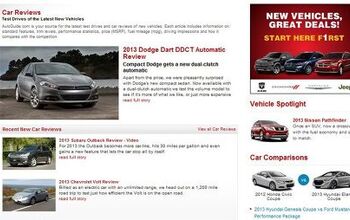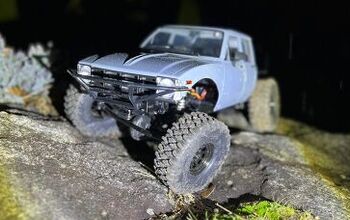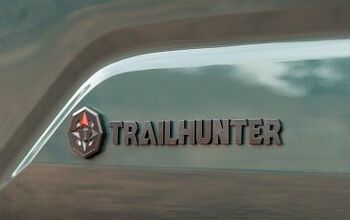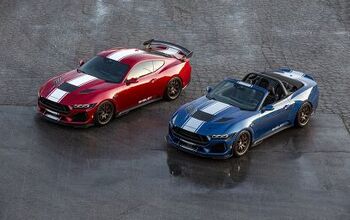2013 Chevrolet Avalanche Review

For more than a decade Chevrolet has offered drivers a no-compromise utility vehicle that combines the cabin comfort of a full-size SUV with the open-bed versatility of a pickup. The Avalanche is a unique truck that’s served the company and its customers well. But all great things must come to an end, and the sun is setting on this golden oldie.
FAST FACTS
| 1. All Avalanches are powered by a 5.3-liter V8 that delivers 320 horsepower and 335 lb-ft of torque. |
| 2. 2013 is the last model year for the Avalanche. GM is killing it off when its next-generation pickups arrive later in the year. |
| 3. An innovative “midgate” separates the cabin from the bed. Along with the rear seats, it folds down, allowing the Avalanche to carry cargo that’s longer than eight feet. |
| 4. The Avalanche is rated to tow up to 8,100 lbs. |
Its days are numbered; it’s driving on borrowed time. GM has decided to euthanize the Avalanche with 2013 being its final model year.
Declining sales are a major reason for this move. The truck reached its zenith back in 2003 when dealers sold more than 93,000 of them, but the Avalanche’s showroom performance steadily declined after that. When the last one rolls off the line the company estimates it will have delivered more than 600,000 of them over its lifetime.
“It really took off the first couple years,” said Tom Wilkinson, Communications Manager for Chevrolet Trucks. “When we introduced the Avalanche there were no [light-duty] crew-cab pickups,” he said.
But all of that changed around the middle of the last decade. Four-door versions of other trucks, including Chevrolet’s immensely popular Silverado began to attract would-be Avalanche buyers, which started to push this utility vehicle off the mountain. Like the natural disaster it’s named after, the resultant sales slide was unstoppable.
GM just revealed its 2014 pickups, which are due to launch in the second quarter of next year. The Avalanche is not a part of that lineup. “There’s a core of people who really love them, but unfortunately there are not enough of them to justify tooling up another Avalanche on the next-gen architecture,” Wilkinson said. “We think that the new Silverado will have a lot of appeal to Avalanche customers,” he said.
GOING OUT ON A HIGH NOTE
Vehicles are a lot like dairy products; they generally don’t age very well. No one wants to drink milk that’s been left out for a week or eat yogurt that’s grown a fuzzy green beard. The same is true of cars and trucks. If an automaker doesn’t regularly update its lineup things can start to get pretty stale, pretty quickly. But that’s not the case with GM’s rough-and-ready T900 models, especially the Avalanche. This body style was launched way back in 2006 for the ‘07 model year, but like a fine Bordeaux they’ve held up very well over time.
There’s really nothing new to report about the Avalanche’s exterior. It’s the same handsome vehicle that’s been on the market for more than half a decade. There is one minor change though. All models gain “Black Diamond” badges on the bed’s flying buttresses.
Another thing worth noting is the truck’s panel gaps. They’re extremely tight and consistent – as good or better than those of a German luxury sedan. This attention to detail really gives the impression the Avalanche is a high-quality machine.
The same no-nonsense design theme carries through inside. The truck’s dashboard is cleanly styled and logically laid out, unlike the Ford F-150’s interior for instance, which looks blocky and overdone. Additionally, the truck’s gauges and controls are easy to read and simple to use.
One old-school feature and something a few readers will no doubt criticize is the ignition. The Avalanche uses an honest-to-goodness key. Remember those? To start the engine you jam a small, flat piece of metal into the steering column and give it a twist. At the risk of sounding like an automotive Luddite, I love these kinds of ignitions. Unlike push-button systems there’s no ambiguity; there’s no doubt whether the vehicle is on or off. Stick-and-twist starters are simple, effective and something I wish automakers would keep using rather than transitioning to damnable push-button systems.
When it comes to passenger comfort the Avalanche performs well. The front seats are restful and supportive; just don’t look for any lateral bolstering. The rear bench is as spacious as the Great Plains, with ample legroom and a generous rake to the backrest.
MIDGATE INNOVATION
The Avalanche’s standout feature is its innovative midgate, a secondary tailgate between the bed and cabin. Basically the back wall of the cab opens, allowing the vehicle to carry longer cargo. The truck’s standard bed is 5 feet 3 inches long, a decent size for many loads. But if that’s not enough, the midgate can be folded away and the back window removed in just a couple minutes, extending the cargo hold to a whopping 8 feet 2 inches – voluminous enough to carry 4-by-8 sheet of building material, the gold standard for payload. The engineering that went into the origami seats and folding midgate is pretty impressive.
Keeping your cargo safe and dry, a sturdy top covers the bed, sealing out even the nastiest weather. If necessary, the multi-piece lid can easily be removed by pulling on a few levers and sliding out the sections. For a little extra storage the sides of the bed also feature locking bins, a la the RamBox on Chrysler’s pickups.
SMOOTH AND COMFORTABLE
You’ll never confuse the Avalanche with Scion’s razor-sharp FR-S, AutoGuide’s 2013 Car of the Year. Its steering is loose and the ride can be a bit jittery, but by truck standards, it’s completely acceptable.
The hard-working Chevy is powered by a smooth-running 5.3-liter V8, the only engine offered. This pushrod powerplant delivers 320 horsepower and 335 lb-ft of torque. Impressive-sounding numbers, but it does feel a little overmatched. At full throttle the engine just doesn’t push you back into the seat like you’d expect. The Avalanche’s curb weight probably has something to do with that. It’s a real fatty, tipping the scales at more than 5,800 pounds.
Helping increase efficiency, the Avalanche’s engine features something called Active Fuel Management (AFM), which can shut down half of the cylinders when eight pots of fury are not needed. And engineers nailed it; the transition from four to eight cylinders is all but invisible.
GM claims AFM can increase efficiency by about six percent in government testing, possibly more in real-world driving. What’s the result? Fuel economy is estimated at 14 miles per gallon in the city and 20 on the highway, identical whether the truck is two- or four-wheel drive.
A responsive six-speed automatic transmission handles shifting duties, and it works flawlessly, dropping a gear or two when passing power is requested and seamlessly slurring upshifts. It operates so smoothly you’d swear it’s filled with clotted cream.
When properly equipped the Avalanche is rated to tow up to 8,100 pounds.
THE VERDICT
The 2013 Chevrolet Avalanche is an impressive truck, and for $51,295 it ought to be. That’s what our test model stickered for. Thankfully its base price is a more tolerable $36,975, which is less than last year and includes more content, including a back up camera, rear park assist, power adjustable pedals and a remote starter.
Even though this body style was introduced back in 2006, it’s still competitive with much newer pickups on the market. Given how well it’s withstood the test of time, it bodes well for GM’s 2014 models.
Aside from its versatility and spaciousness, one appealing aspect of the Avalanche is its relative simplicity. It’s tastefully styled inside and out; the whole package feels about as honest as Abe Lincoln on the witness stand. It’s wholesome and hearty like a steaming bowl of oatmeal on a cold winter morning.
If you’re looking to park one of these transforming trucks in your garage you’d better act fast because with warmer weather coming in a few months the Avalanche will soon disappear.
LOVE IT
- Straight-forward Styling
- Solid construction
- Tremendous versatility
LEAVE IT
- Doesn’t feel as quick as it should
- Not cheap… at all
- Dead truck driving

Born and raised in metro Detroit, Craig was steeped in mechanics from childhood. He feels as much at home with a wrench or welding gun in his hand as he does behind the wheel or in front of a camera. Putting his Bachelor's Degree in Journalism to good use, he's always pumping out videos, reviews, and features for AutoGuide.com. When the workday is over, he can be found out driving his fully restored 1936 Ford V8 sedan. Craig has covered the automotive industry full time for more than 10 years and is a member of the Automotive Press Association (APA) and Midwest Automotive Media Association (MAMA).
More by Craig Cole































Comments
Join the conversation